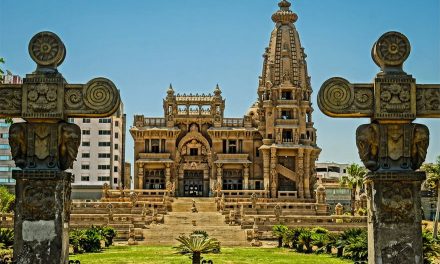“Kasturi (a substance collected from the navel of deer) is used for the facial of the presiding sibling Deities of word famous Jagannath Temple during Rath Yatra. But there has been an acute shortage of the rare and invaluable ‘kasturi’ at the 12th century shrine, giving sleepless nights to the shrine authorities. The State and Centre work together to obtain kasturi from Nepal. The Jagannath culture should be kept alive,” the Puri seer said.”
The Kasturi is required for the mukh shringar (cosmetic facials) of Lord Jagannath, Baladev and Subhadra. Approximately five grams of the rare Kasturi powder is mixed with different herbs to make a paste, which is then applied to the faces and bodies of Their Lordships. This is a part of the herbal treatment for the Deities, who fall ill each summer before the Ratha Yatra.
Tradition has it that Nepal’s royal family, who enjoys special privileges at the Jagannath Puri temple, would arrange to have the needed Kasturi sent to Puri dhama for the Lord. Since the fall of monarchy in the Himalayan nation, however, Nepal’s new rulers have been unresponsive to the temple’s request for their regular supply Kasturi, especially needed for the Ratha Yatra.
Lord Jagannath is not only in His use of the Kasturi cosmetic. In Sri Krishna Karnamrita 2.108 by Sri Bilvamangala Thakur refers to Lord Mukunda’s use of kasturi tilaka:
kasturi tilakam lalata phalake
vakshasthale kausthubham naasaagre navamouktikam,
karatale venum kare kankanam
sarvaange harichandanancha kalayam
kanthecha mukthavali
gopastree pariveshthito
vijayate gopala chudaamani
vijayate gopala chudaamani
Kasturi – ‘muská’ (musk)
Musk is the name originally given to a substance with a penetrating odor obtained from a gland of the male musk deer, which is situated between its stomach and genitals. The substance has been used as a popular perfume fixative since ancient times and is one of the most expensive animal products in the world. The name, originated from Sanskrit ‘muská’ meaning “testicle,” has come to encompass a wide variety of substances with somewhat similar odors although many of them are quite different in their chemical structures. They include glandular secretions from animals other than the musk deer, numerous plants emitting similar fragrances, and artificial substances with similar odors.[1]
Until the late 19th century, natural musk was used extensively in perfumery until economic and ethical motives led to the adoption of synthetic musk, which is used almost exclusively. The organic compound primarily responsible for the characteristic odor of musk is muscone.
Modern use of natural musk pods is limited to Traditional Chinese medicine.
Musk was unknown in classical antiquity and reference to it does not appear until the 5th century, when it is mentioned in the Talmud (Brachot 43) as a animal-based fragrance. The 6th-century Greek explorer Cosmas Indicopleustes mentioned it as a product obtained from India. [1] Soon afterwards Arab and Byzantine perfume makers began to use it, and it acquired a reputation as an aphrodisiac. Under the Abbasid Empire of Arabs it was highly regarded, and the caliphs of Baghdad used it lavishly. In the early 9th century, Al-Kindi included it in a large number of his perfume recipes and it became one of the important luxury items brought by Arabian ships from the East.
The etymology of the name ‘musk’, originating from Sanskrit muská, is found in the Middle Persian ‘mušk’, Late Greek ‘?????? (moschos)’, Late Latin ‘muscus’, Middle French ‘musc’ and Middle English ‘muske’, which hints at its trade route.
The musk deer belongs to the family Moschidae. It lives in India, Pakistan, Tibet, China, Siberia and Mongolia. To obtain the musk, the deer is killed and its gland, also called the “musk pod”, is removed.
It is dried either in the sun, on a hot stone, or by immersion in hot oil. Upon drying, the reddish-brown paste turns into a black granular material called “musk grain”, which is used in various solutions. The aroma of the tincture becomes more intense during storage and gives a pleasant odor only after it is considerably diluted. No other natural substance has such a complex aroma associated with so many contradictory descriptions; however, it is usually described abstractly as animalic, earthy and woody [2] or something akin to the odor of baby’s skin.
Good musk is of a dark purplish color, dry, smooth and unctuous to the touch, and bitter in taste. It dissolves in boiling water to the extent of about one-half; alcohol takes up one-third of the substance, and ether and chloroform dissolve still less. The grain of musk will distinctly scent millions of cubic feet of air without any appreciable loss of weight, and its scent is not only more penetrating but more persistent than that of any other known substance. In addition to its odoriferous principle, it contains ammonia, cholesterol, fatty matter, a bitter resinous substance, and other animal principles.
The best quality is said to be Tonkin musk from Tibet and China, followed by Assam and Nepal musk, while Carbadine musk from Russian and Chinese Himalayan regions are considered inferior. Obtaining one kilogram (2.2 lb) of musk grains requires between thirty and fifty deer, making musk tinctures highly expensive. At the beginning of the 19th century, Tonkin musk grains cost about twice their weight in gold.
Musk has been a key constituent in many perfumes since its discovery, being held to give a perfume long-lasting power as a fixative. Despite its high price, musk tinctures were used in perfumery until 1979, when musk deer became protected as an endangered species by the Convention on the International Trade in Endangered Species of Wild Flora and Fauna (CITES).












